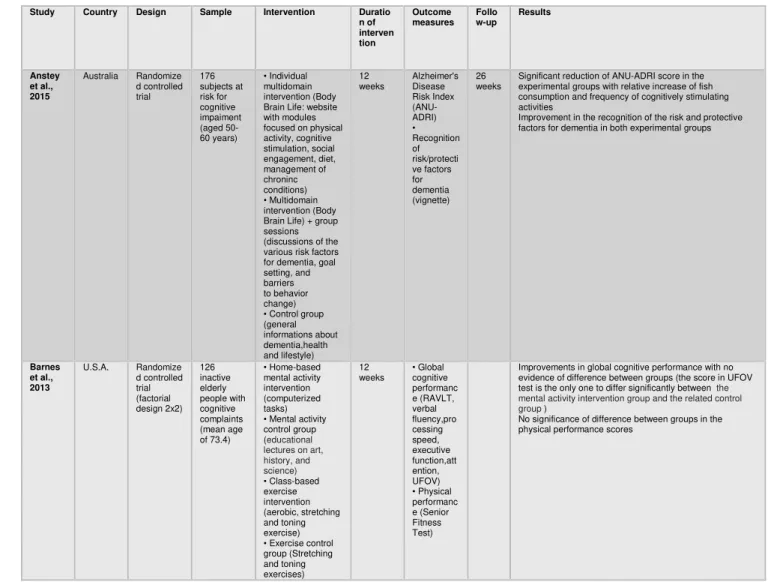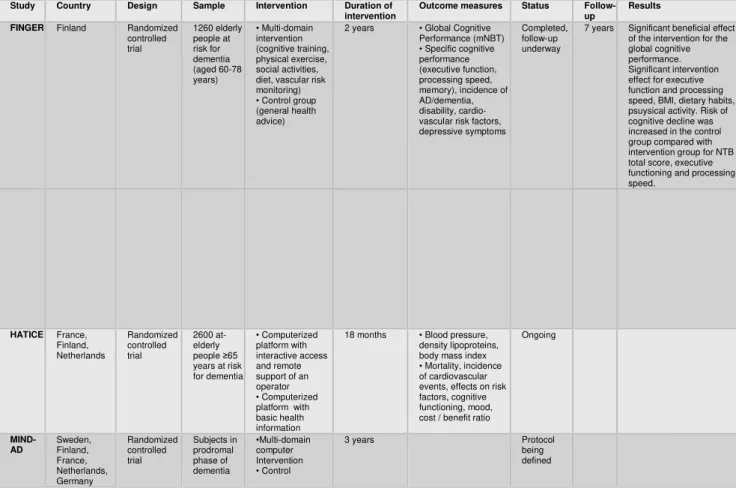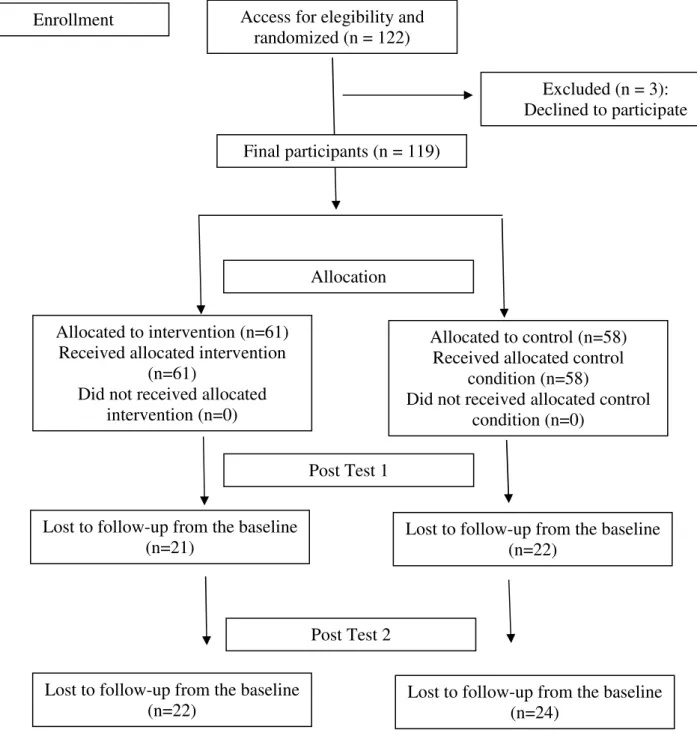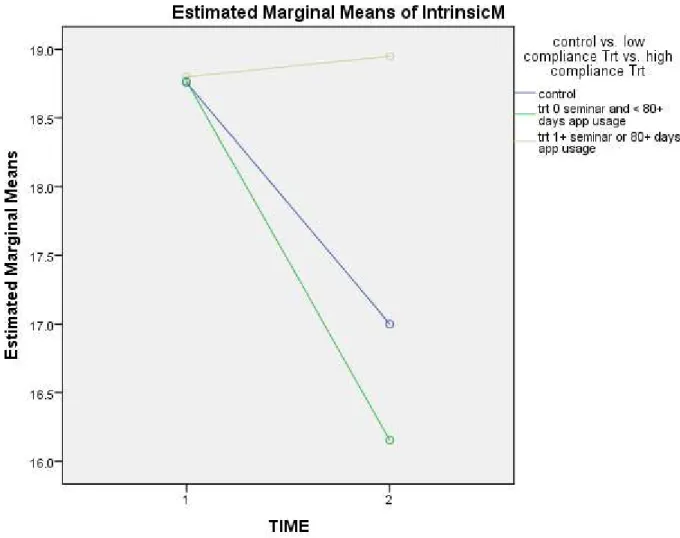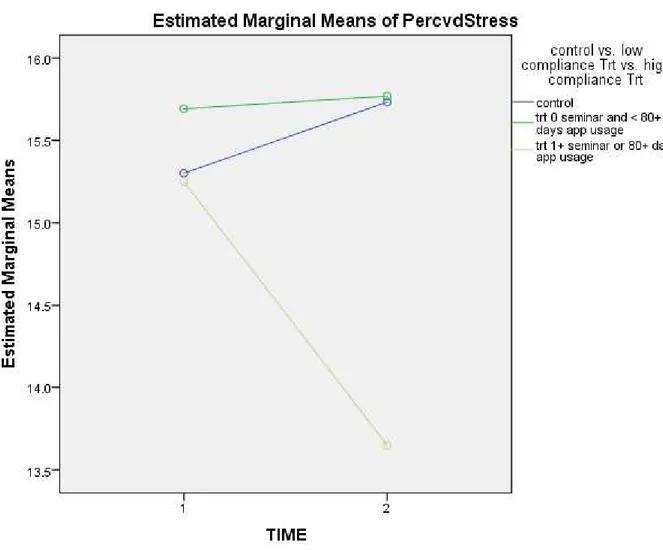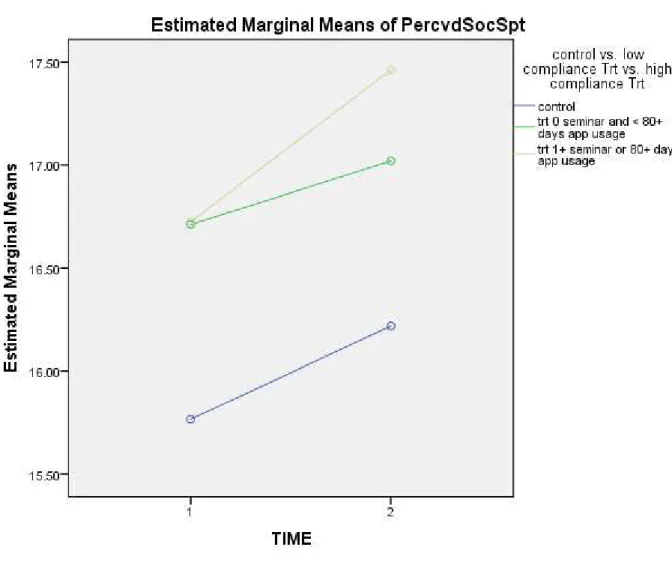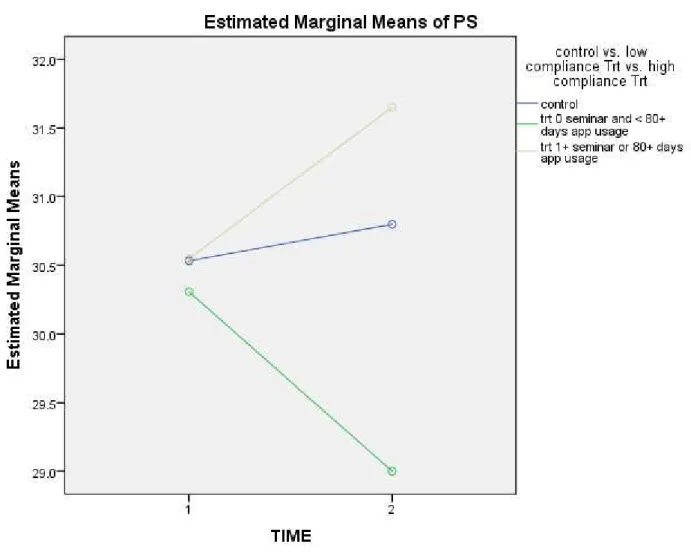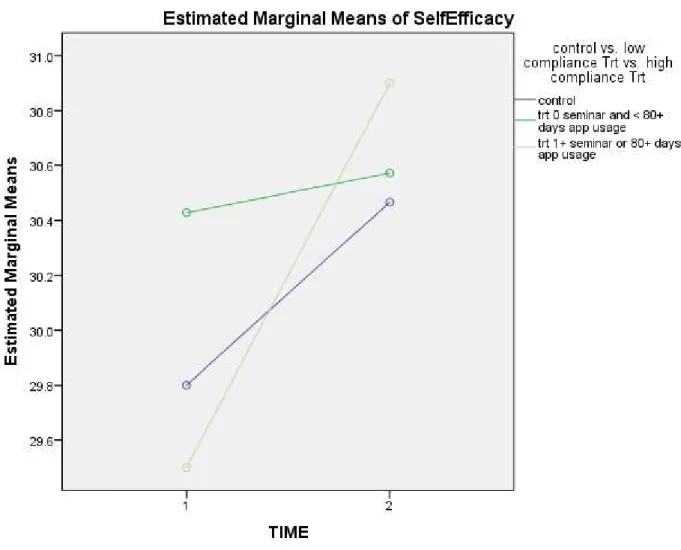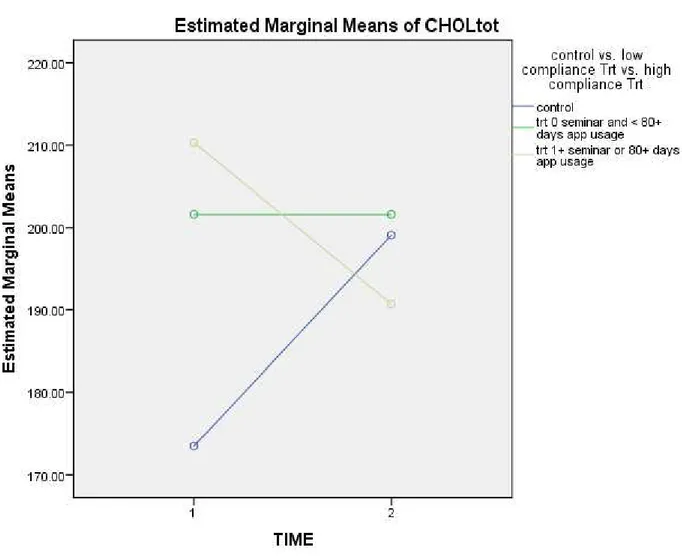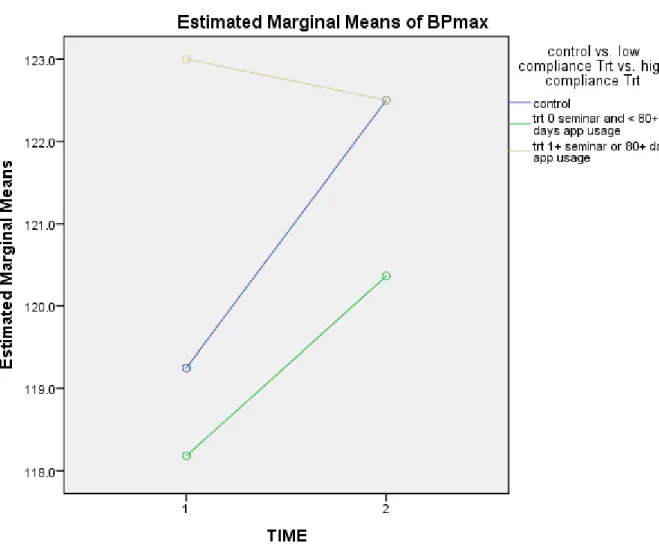Facoltà di Medicina e Psicologia
Tesi di dottorato in “Psicologia sociale, dello
sviluppo e ricerca educativa”
“The Gray Matter project: modificating
lifestyles to prevent dementia”
Stefano Eleuteri
n°
matricola: 1047814
Tutor:
Prof. Fabio Lucidi
Index:
Introduction
p.
4
1.
Preventing dementia: from the single intervention to the
multidomain ones
p.
7
1.1 Introduction p. 7
1.2 Interventions of individual domains p. 8
1.2.1. Physical activity p. 9
1.2.2. Cognitive activity p. 10
1.2.3. Social participation p. 12
1.2.4. Diet p. 14
1.3.Multi-domani interventions p. 16
1.3.1. Ongoing multi-domain interventions p. 34
2. Caregivers of people with dementia lifestyles: sleep quality as
predictor of BMI in the non-depressed sample
p.
38
2.1 Introduction p. 38 2.2 Methods p. 42 2.3 Results p. 49 2.4 Discussion p. 57 2.5 Conclusions p. 613.
The Gray Matters randomized trial: a multidomain lifestyle intervention
to improve brain health in middle-aged persons to reduce later
Alzheimer’s disease risk.
p.
63
3.1 Introduction p. 63 3.2 Methods p. 67 3.3 Results p. 78 3.3 Discussion p. 95 3.4.Conclusions p. 99Conclusions
p. 101
References
p. 105
4 Introduction
Alzheimer Disease (AD) is already a public health crisis likely to get much worse with the aging of the Baby Boomer generation. AD is irreversible; there is currently no vaccine, and no cure. AD research has provided consistent evidence of significant associations between lifestyle and AD risk, above and beyond the effects of genes. A grassroots movement to engage middle-aged individuals in healthier lifestyles is crucial so that, as a society, we are doing more than just waiting for a cure to eventually be found.
Given the lack of effective pharmacological therapy, prevention interventions may represent a valid option for the treatment of these diseases.
As dementia aetiology is based on different bio-psycho-social factors, prevention strategies for dementia have recently focused on multi-domain interventions of individuals at risk and/or with a normative cognitive level, encouraging the lifestyle change through combined programs of physical activity, cognitive training, nutrition education and social activities (in chapter 1, a narrative review of these studies is presented).
Most of the multidomain intervention aimed on the prevention of cognitive disease are carried on with elderly patients with a mild cognitive decline or on at-risk adult categories.
5
Caregivers of patients with dementia are considered as an at-risk category. The majority of them (86%) are represented by family members (prominently women) who are also defined as “informal caregivers”. They fulfil their caring-giving role from 7 to 11 h a day on average, up to 10-15 h when clinical conditions worsen 10. Informal caregivers have to cope with physical, psychological and social stressors that affect their health conditions and quality of life negatively (Eleuteri et al., 2016). The burdens of caregiving include many things that have been shown to increase the risk of cognitive decline, including chronic stress, social isolation, depression, decreased physical activity, and a shift in eating habits toward more fast food and processed foods. Studies have shown, for example, that caregivers of Alzheimer's disease patients had lower scores on tests that measure attention, visual processing speeds, and memory than adults of the same age who were not caregivers. Studies also show that greater distress - including disturbed sleep and lack of positive experiences - appeared to account for those differences. Family caregivers have, for these reasons, been repeatedly acknowledged as a chronic stress model, even when their caregiving task finish after the death of the care recipient (Schulz et al., 2008).
For example, literature showed that caregivers partner of patients with Alzheimer’s disease have a greater BMI or gain
6
significantly more weight compared with controls (Vitaliano et al., 1996). This could be connected with the important role that sleep plays between stress and metabolic health (Geiker et al., 2018). Being a caregiver has been found to be a factor affecting negatively sleep quality (Brummett et al., 2006).
Interventions to promote positive lifestyles are, therefore, important in order to improve the caregivers’ general health and, specifically, to prevent the cognitive decline.
In the second chapter, an article recently published specifies the importance of multimodal interventions in ameliorating caregivers’ health, since complex moderation and mediation effects exist between the different areas involved in the AD risk reduction.
The third chapter will, finally, describe the results of the Gray Matter Project, a multidomain pilot RCT, firstly carried out done in Cache County, Utah designed to promote positive changes in lifestyle (exercise, nutrition, cognitive stimulation, social engagement, stress management, and sleep quality), specifically for the purpose of reducing AD risk in family caregivers of elderly with dementia.
7
1. Preventing dementia: from the single intervention to the multidomain ones
1.1. Introduction
When it comes to prevention, it is necessary to distinguish: primary prevention, that is an intervention that seeks to reduce the occurrence or the development of a disease; secondary prevention, which points to early detection of an emerging disease, allowing for an early intervention in order to increase treatment options and to halt or to slow disease progression; and, finally, tertiary prevention which focuses on reducing negative impact of an existing disease through restoring function and reducing complications.
The primary prevention of dementia consists in a reduction of potentially modifiable risk factors in terms of lifestyle, diet and management of chronic diseases such as hypertension and diabetes; in the last ten years research has increasingly focused on the cumulative effect and the mutual interaction between genetical, biological and psychosocial risk factors and protective factors (Whalley et al, 2006; Fratiglioni & Qiu, 2009; Qiu et al., 2009).
8
Factors related to lifestyle represent an area of interest and particularly stimulating research for the prevention of dementia syndromes.
1.2. Interventions of individual domains
Primary prevention interventions on individual domains present a mixed picture, with some positive results but also with many studies lacking of statistical power, proving ineffective or otherwise poorly adapted to the clinical needs of the multifactorial nature of dementia (Olanrewaju et al., 2015). In the next paragraphs, just some interventions on individual domains are showed: in fact many studies have been conducted in the different areas also collected in meta-analyses (i.e. Rakesh et al., 2017; Zeng et al., 2016) and the results have been, obviously, different, based on the methodology of the intervention. The aim of these first paragraphs is, however, to highlight the difference between interventions based on single domains or on multiple ones.
9 1.2.1. Physical activity
The benefits of physical activity are well documented with regard to aspects related to quality of life and cognitive function in older adults (Barnett et al., 2015). Controversial results have been, however, found between exercise and decreased risk for the development of Alzheimer’s Dementia (AD), with, for example, a recent longitudinal study showing a significant association (Larson et al., 2006), while others finding no significant relationships (Sink et al., 2015).
In general, the results of cross-sectional and longitudinal studies with healthy elderly, frail or suffering from cognitive impairment, stress the importance of physical activity in terms of age-related decline of prevention (Bherer et al., 2013); some extensive revisions of the scientific literature report the positive effects of specific strengthening exercises, aerobic exercises, or combinations of them on cognitive decline in older people (Angevaren et al., 2008; Carvalho et al., 2014).
The Longitudinal Aging Study Amsterdam (Visser et al., 2002) found that physical activity and a regular active lifestyle (walking outdoors, cycling, playing home activities, participating in sports activities) are
10
associated with a slowing of cognitive and physical decline, and the resultant reduction of the disability; literature suggests that the positive effects of physical activity in older adults are not revealed only with respect to the strength, endurance, flexibility, balance (Carlson et al., 1999), but also related to the emotional well-being (Netz et al., 2005) and the prevention of disability (Spirduso & Cronin, 2001).
1.2.2. Cognitive Activity
Cognitive interventions that have been conducted in primary prevention of dementia consist of structured practices on tasks considered to be relevant for the aspects of cognitive functioning more interested in an age-related decline (Cavallini et al., 2003; McDougall et al., 2010; Ball et al., 2007; Saczynski et al., 2002); the multi-domain trainings showed greater effectiveness in the short and long term than those with a focus on the exercise of individual cognitive components (Cheng Y. et al., 2012a, Cheng Y et al., 2012b; Rapp et al., 2002; Buiza et al., 2008; Mahncke et al., 2006; Eckroth-Bucher & Siberski, 2009; Basak et al., 2008; Corbett et al., 2015).
In particular, the Advanced Cognitive Training for Independent and Vital Elderly (Jobe et al., 2001) was
11
the first large-scale RCT to carry on a multi-domain 5/6 weeks intervention based on different skill enhancement and memory underlying strategies, reasoning and attention; the combination of 10 sessions for small groups of about 60 minutes and 4 sessions of random reinforcement was significantly valid as regards the improvement of the relative performance and the maintenance of their respective benefits five years (Wolinsky et al., 2010) and ten years later (Rebok et al., 2014).
A large amount of evidence demonstrates that this type of training in healthy and elderly adults correlates with improvements in the specific domains of verbal episodic memory, problem-solving, processing and recognition speed of visual stimuli (Ball et al., 2002), with long term effects in the execution of daily instrumental activities after 5 years (Willis et al., 2006). However, these improvements do not correlate with a significant reduction in the incidence of the disease
(Unverzagt et al., 2012).
Similar results have been obtained with combined and simultaneous activities (de Bruin et al., 2013; Theill et al., 2013; Eggenberger et al., 2015; Yokoyama et al., 2015), namely the simultaneous execution of particular cognitive tasks and physical exercises; these activities
12
resulted in significant improvements in the cognitive performance associated with executive functions, verbal and visuospatial abilities.
In general, a Cochrane review highlighted significant improvements in memory and above all in the immediate/delayed recall of both healthy elderly men and the ones with cognitive impairment, following different types of cognitive activities (Martin et al., 2011); other systematic reviews of observational studies and RCT’s gave similar results (Mowszowski et al., 2010), although no direct causal relationship between cognitive activities and the reduction of risk of developing AD or dementia has been shown (Papp et al., 2009; Valenzuela & Sachdev, 2009). Moreover, the so-called 'Hawthorne Effect', due to the massive participation of the experimenter in the participants’ life for a long time, may be an important factor affecting the generalisability of clinical research to routine practice (McCarney et al., 2007).
1.2.3. Social participation
Only small studies exist in scientific literature regarding the participation to socially stimulating activities as a protection factor against cognitive impairment; moreover, social tasks are most of the times combined
13
with cognitive/physical activities (Fratiglioni et al., 2004).
Literature suggest that exist a complex network of factors where the social interaction is one of the multiple elements characterizing the individual cognitive reserve. The individual cognitive reserve is made up by the combination of intelligence, knowledge and learning assimilated over a lifetime and is also influenced by education, job satisfaction and frequency of free-time activities (Stern, 2009; Smart et al., 2014); referring to this perspective, social participation could contribute to the pathogenesis and progression of dementia contrasting with the negative effects of solitude and social isolation on the incidence of the disease (Wilson et al., 2007).
Individual studies demonstrated that the frequency of social activities connected with voluntary work (Fried et al., 2004), participative problem solving (Stine-Morrow et al., 2008), group psychosocial activities (Pitkala et al., 2011), arts in general (Noice et al., 2013) and meditation (Wahbeh et al., 2014), correlates with a better cognitive function and a reduction of the risk of developing dementia (Scarmeas et al., 2001; Karp et al., 2006); however, a coordinated analysis of four longitudinal studies on different populations did not find
14
significant improvements in memory, semantic knowledge and reasoning, except for verbal fluence (Brown et al., 2012).
1.2.4. Diet
In the last 15 years, a large number of empirical evidence demonstrated that a high adherence to the Mediterranean diet correlates with a significant slowing in cognitive decline associated with a lower rate of conversion to AD and with the improvement in specific cognitive domains of memory (delayed recognition, long-term memory, working memory), executive functions and visuo-constructive abilities (Wengreen et al., 2013; Hardman et al., 2016).
In this field, clinical trials focused mainly on the administration of single nutrients rather than on the
promotion of complex nutritional patterns (Olanrewaju
et al., 2015). The latter are designed for the wider context of the prevention, for example, of cardiovascular disease; in this field, a combination of nutritional modifications, caloric restriction and physical exercise gave positive effects in terms of arterial pressure control and improvement of specific neurocognitive functions (selective attention, verbal
15
memory, psychomotor speed) of hypertensive, sedentary and overweight adults (Smith et al., 2010). Current epidemiological data have recognized the protective role of some micronutrients (vitamins B related to homocysteine metabolism, antioxidant vitamins C and E, flavonoids, omega-3 polyunsaturated fatty acids, vitamin D) and some macronutrients (fish) in the prevention of dementia. However, the literature is not still so convergent with the significant effect of diet in preventing dementia (Gillette-Guyonnet et al., 2013; Rathod et al., 2016). Some works have shown the positive effect that the increase of the fatty acids to omega-3 long chain have in the health enforcement of senior people functions, especially in the verbal fluency (Witte et al., 2014) and of senior people with cognitive decline (Chiu et al., 2008). Nevertheless, the results of experimental research using these nutrients were in most cases inconclusive with cognitively healthy subjects (Dangour et al., 2010), with Mild Cognitive Impairment subjects underwent nutritional interventions combined with aerobic and/or cognitive training (Kobe et al., 2016), and with frail elders undergoing nutritional interventions associated with physical and/or social training (de Jong et al., 2001).
16
Vitamin E supplements did not produce interesting results on the cognitive functions of senior people (Cetin et al., 2010); the same is showed for the PREDIMED-NAVARRE, nutritional intervention based on the supplementation of extra-virgin olive oil that did not find significant differences between the cognitive domains of experimental and control subjects. It was, interestingly, found a better cognitive functioning in the long term in the experimental group (Martinez-LaPiscina et al., 2013).
1.3. Multi-domain interventions
Prevention strategies for dementia have recently focused on multi-domain interventions of individuals at risk and/or with a normative cognitive level, encouraging the lifestyle change through combined programs of physical activity, cognitive training, nutrition education and social activities (Table 1). Multi-domain means that at least two different interventions in different areas have been consecutively carried out.
For this reason, future models for prevention should be multimodal, characterized by a heterogeneous combination of exercises, different from each other but synergistically involved in the same dementing
17
processes, and by the presence of a fascinating environment, stimulating and personally considered as important, able to promote the achievement of also
long-term personal goals (Fissler et al., 2013).
Given the recognized multifactorial etiology of dementia, the report by the National Institutes of Health (2011) recommends to conduct Clinical Trials Randomized with multidimensional interventions on high-risk individuals; hence the growing interest in multivariate and multimodal approaches that are the focus of this work.
Recent observational studies precisely suggest that the presence of cognitive components, physical and social activities slow cognitive decline and support healthy aging (Karp et al., 2006; Paillard-Borg et al., 2009; Akbaraly et al., 2009); an active lifestyle, as difficult to theorize due to the enormous variety of its constituent elements, seems to trigger, especially in those at risk, a number of long-term changes in the global cognitive functioning and memory that significantly differ from short-term effects of training interventions on specific activities (Küster et al., 2016).
Multi-domain interventions act on more risk factors at the same time, given the complex nature of dementia and interaction with specific protective factors such as
18
education, environmental stimulation and
physical/cognitive/social activities, that in many epidemiological studies have been associated with a reduced risk of cognitive impairment (Langa et al., 2008; Schrijvers et al, 2012); these approaches aim to encourage a range of behavioral changes through the simultaneous consideration of the components that influence individual lifestyles (Lustig et al., 2009).
In recent years, two systematic reviews of the scientific literature have shown that the combination of certain physical exercises (strength, strengthening, balance) with cognitive tasks focused on specific skills (attention, executive function, working memory), produce greater cognitive benefits than those resulting from activities on just one domain (Bamidis et al., 2014; Lauenroth et al., 2016).
In particular, the study of Fabre et al. (2002) compared
the effects of aerobic and mental training on cognitive
function, showing the better effects in the association of the two techniques on cognitive performance of elderly subjects not suffering from any form of dementia.
The study by Oswald et al. (2006), in the same way, has found that a combined physical and cognitive treatment is accompanied by a series of long-term
19
positive effect on cognitive physical and emotional domains. In fact, after five years, they noted substantial
improvements in some cognitive functions
(primary/secondary/long term memory, attention, reasoning, processing speed), in the perceived and functional autonomy levels of health status of people doing a combined cognitive and physical training, compared to the ones who have been administered a single physical and psycho-educational group training, or a physical training or a cognitive training. Other studies, by contrast, showed no significant differences between the combined or single experimental groups, even if giving evidence of the positive effects of interaction between cognitive intervention, single or combined with other physical exercises, and subsequent individual performance of non-demented elderly (Barnes et al., 2013; Legault et al., 2011; Shatil, 2013), or between physical training, single or combined with nutritional elements, and reduced risk of developing dementia (Komulainen et al., 2010).
Combined efforts of this kind have, as target group, not only cognitively healthy subjects, but also people at risk for cognitive decline and cardiovascular or metabolic comorbidities. From this perspective, a series of studies have been conducted to examine the potential
20
benefits of encouraging healthier lifestyles of patients with mild cognitive impairment (MCI); combined training have been associated to a set of positive changes in cognitive scores at 12-months after the end of the trial and in the absence of functional improvements in the everyday autonomy (Lam et al., 2015), while in other cases there have not been significant differences in global cognition and executive function compared to other experimental groups (Singh et al., 2014).
Therefore, over the course of time, it has been outlined the need for interventions based on lifestyle change, promoting a healthy ageing in order to reduce the risk of dementia in the population; physical or cognitive tests, usually based on the involvement of limited skills for a fixed period of time, have been incorporated into a complex program of lifestyle changes.
These programs aim to involve subjects in a series of
activities diversified with each other and try to integrate the behavioral changes in the life of every day, supporting them long-term and thus reinforcing the protective effect of the cognitive reserve (CR), as occurred in the trial AKTIVA (Tesky et al., 2011): in this case, participation in cognitively stimulating activities (read, play chess, play), even when combined with physical training and nutritional counseling, proved to
21
have a crucial importance for the promotion of an active lifestyle and healthy ageing. The same study has been replicated later in patients with MCI; Results suggest that cognitive stimulation therapy is feasible for patients with MCI (Tesky et al., 2017). The AKTIVA-MCI program gives motivational support and indicates that it is never too late to start participating in (new) activities. Analysis of the daily activity protocols showed some interesting and significant behavioral modifications. However, results should be interpreted carefully because of the small sample size. Replications with a representative sample and improved methodology (eg, control group) are clearly needed.
Among the programs addressed to non-demented elderly, some interventions have sought to promote the achievement of personally meaningful goals in physical activity, cognitive activity, diet and health in general through a goal-setting approach, with or without telephone tutoring. The results have shown significant short-term improvements in memory, executive functioning, cholesterol levels in the aerobic capacity and physical agility, also confirmed at 12 months follow-up (Clare et al., 2015); other studies have relied on an employment approach, both in the study of
22
Pieramico and colleagues (2012) who, through the combined stimulation of cognitive (sudoku, puzzles, virtual game, listening to music), physical (dance) and social activity (discussion groups), have reported improvements in memory and information processing strategies with subsequent structural reorganization of the brain, and in the research conducted by Clark and colleagues (2012) via the protocol Lifestyle Redesign (Jackson et al., 1998). Positive effects were found on some cognitive domains (immediate/delayed recall, recognition, psychomotor speed) and on the more general state of health the elders involved.
Also the pilot study carried out by Norton and colleagues (2015) proposed a multimodal intervention for adults at risk for dementia in the context of some specific domains, including physical activity, cognitive stimulation, social engagement, diet, sleep and stress management; in this case the use of technological devices (smartphone app and Nike Fuel Band) and educational/informational materials, has proved to be useful for the promotion of a series of behavioral changes associated with preventive and healthy lifestyle.
Some interventions of health promotion and prevention of dementia have also involved the subjects with MCI
23
in a series of cognitively, physically and socially stimulating activities, showing significant improvements in working memory and in health, in terms of body mass index reduction, and better both blood pressure and heart rate at rest/under stress (Dannhauser et al., 2014); similarly, the participation of potentially at risk individuals to on-line training programs, based on short-term achievement of specific objectives for
cognitive stimulation, physical activity, social
engagement, diet, chronic disease management and recognition of risk/protection factors, has proved to be effective in the increase of some healthy behaviors such as the consumption of fish and cognitive engagement, with a relative reduction of individual risk profile (Anstey et al., 2015). The Prevention of Vascular Dementia by Intensive Care (PREDIVA) can be considered the largest and long-lived randomized primary prevention of 3,526 older people from 70-78 years old and cognitively healthy (Richard et al., 2009). Elderly people were administered for six years a control treatment and monitoring of cardiovascular risk medical conditions (blood pressure, blood lipid levels and glucose) or a combined treatment of medical assessment and intervention on lifestyles (exercise, smoking, weight, diet). The results, discussed in the
24
Alzheimer's Association International Conference in 2016 in Toronto, reported no significant differences between the groups with respect to the incidence of AD, with the exception of a subset of people with untreated hypertension; however, clinically significant effects emerged between the groups with regard to the incidence of dementias other than Alzheimer's (van Charante et al., 2016).
The Multidomain Alzheimer Preventive Trial involved 1,680 frail elderly ≥70 years in a multi-domain intervention based on group sessions and individual interviews, which have focused on cognitive stimulation (reasoning and strategies mnemonic applicable to everyday problems), physical activity (encouragement to perform at least 150 minutes of moderately intense
physical activity per week) and nutritional
recommendations for healthy eating. The MAPT has investigated the effects of this intervention on their cognitive performance in 3 years, it was completed in March 2014 and provides for a follow-up at 5 years (Gillette-Guyonnet et al., 2009); the study results presented for the first time during the Clinical Trial Conference in Alzheimer's Disease (2015) in Barcelona, when the authors have reported significant improvements in the group receiving the administration
25
of supplements of omega-3 fatty acids combined with the multi-domain intervention, both in the cognitive performance and in cerebral glucose metabolism. The results of MAPT showed no significant effects with any of the three treatment interventions compared with placebo on the primary outcomes, the 15 secondary outcomes (except for one comparison of combined intervention with placebo on the ten item Mini-Mental State Examination, p= .036), or on five of seven prespecified and exploratory subgroup analyses, which compared a multidomain intervention combined with omega 3 polyunsaturated fatty acids or placebo, or omega 3 capsules alone, against placebo capsules in old adults with memory complaints. Analyses showing significant effects favoured multidomain intervention with omega 3 versus placebo in a subgroup at high risk for dementia (based on Cardiovascular Risk Factors, Aging, and Incidence of Dementia [CAIDE] score), but with a small effect size (d= .131), and multidomain intervention (with either omega 3 or placebo) for amyloid-PET positive subgroups of 16 and 23 participants (Coley, Andrieu, 2017).
Ultimately, randomized controlled trials are critically important to assess the impact of multi-domain intervention on reducing risk factors related to
26
impairment and cognitive decline; studies analyzed give important suggestions regarding the most effective behavioral modification strategies for dementia prevention.
This kind of interventions in pre-clinical phase proves to be low cost, low risk, and versatile for different populations; therefore, they have a huge potential in terms of health promotion mainly expressed when the regular practice of physical activity and cognitive activity takes place in a socially stimulating environment, capable of promoting the involvement and adherence to experimental programs.
Participating to such interventions seems to help
people in decreasing depressive symptoms,
modulating negative perceptions about their
performance and increasing psychological wellbeing
levels, especially for combined trainings (Legault et al.,
2011, Shatil et al., 2013).
Lifestyle modification interventions adapt flexibly to the needs of the target population; generally, there is an alternation of individual sessions and small group sessions (group involves 6-10 people), with sessions lasting about 60 to 90 minutes for a maximum of three times a week. The theoretical discussion of specific topics is accompanied by practical activities requiring a
27
personal, daily commitment and being, often, monitored by a telephone or technological software. Even if the most significant results were obtained in a context of cognitive trainings combined with aerobic physical component (Table 1), it is still not possible with the evidence emerged to plan the type and the duration of a protocol that can guarantee more effectiveness. Some studies have shown behavioral and morpho-functional improvements in the short term of 2-6 months (Fabre et al., 2002; Pieramico et al., 2012; Dannhauser et al., 2014; Clark et al., 2012; Anstey et al., 2015; Norton et al., 2015), others showed significant effects with longer times (Oswald et al., 2006; Tesky et al., 2011; Lam et al., 2015; Ngandu et al., 2015), others have clearly highlighted the need for larger samples or intervention service for more than six months (Legault et al., 2011; Barnes et al., 2013).
28
Table 1 – Overview of completed multi-domain intervention trials targeting cognition
Study Country Design Sample Intervention Duratio n of interven tion Outcome measures Follo w-up Results Anstey et al., 2015 Australia Randomize d controlled trial 176 subjects at risk for cognitive impaiment (aged 50-60 years) • Individual multidomain intervention (Body Brain Life: website with modules focused on physical activity, cognitive stimulation, social engagement, diet, management of chroninc conditions) • Multidomain intervention (Body Brain Life) + group sessions (discussions of the various risk factors for dementia, goal setting, and barriers to behavior change) • Control group (general informations about dementia,health and lifestyle) 12 weeks Alzheimer's Disease Risk Index (ANU-ADRI) • Recognition of risk/protecti ve factors for dementia (vignette) 26 weeks
Significant reduction of ANU-ADRI score in the experimental groups with relative increase of fish consumption and frequency of cognitively stimulating activities
Improvement in the recognition of the risk and protective factors for dementia in both experimental groups
Barnes et al., 2013 U.S.A. Randomize d controlled trial (factorial design 2x2) 126 inactive elderly people with cognitive complaints (mean age of 73.4) • Home-based mental activity intervention (computerized tasks) • Mental activity control group (educational lectures on art, history, and science) • Class-based exercise intervention (aerobic, stretching and toning exercise) • Exercise control group (Stretching and toning exercises) 12 weeks • Global cognitive performanc e (RAVLT, verbal fluency,pro cessing speed, executive function,att ention, UFOV) • Physical performanc e (Senior Fitness Test)
Improvements in global cognitive performance with no evidence of difference between groups (the score in UFOV test is the only one to differ significantly between the mental activity intervention group and the related control group )
No significance of difference between groups in the physical performance scores
29 Clare et al., 2015 United Kingdom Randomize d controlled trial 75 healthy elderly people (aged 51-84 years) • Goal-setting intervention (behaviour change goals relating to physical, cognitive and social activity, health and nutrition) • Goal setting intervention with telephone mentoring • Control group (General informations about activities and health) 12 months • Physical activity (PASE) and cognitive activity (FCAS) • Physical performanc e (SFT), cognitive performanc e (MoCA, immediate/ delayed recall, executive function, fluency), depression (CES-D), wellness (GSES), diet (MEDAS), health status
The two goal-setting groups, taken together increased their level of physical and cognitive activity relative to controls. The two goal-setting groups taken together achieved additional benefits compared to control in memory, executive function, cholesterol level, aerobic capacity, flexibility, balance, grip strength, and agility. In addition, the goal-setting intervention with mentoring produced further benefits compared to goal-setting alone in physical activity, body composition,
global cognition and memory, but not in other domains. No significance of difference between groups in psychological well-being Clark et al., 2012 U.S.A. Randomize d controlled trial 460 healty elderly people (aged 60-95 years) • Occupational therapy intervention (Lifestyle Redisign protocol: behaviour change goals relating to physical, cognitive and social activity,health and everyday life) • Control group (no treatment condition)
6
months • Cognitive performanc e (immediate/ delayed recall, recognition, attention, processing speed) • Health status (SF-36), life satisfaction (LSI-Z), depression (CES-D)
For mental and physical well-being, all outcomes reflected positive change; among the cognitive variables, significant pre-to-post improvement was found for immediate recall, delayed recall,
recognition and psychomotor speed. Significant benefit due to the lifestyle intervention for SF-36, LSI-Z and CES-D
Coley, Andrieu, 2017 Franc e Randomi zed controlle d trial 1,680 frail elderly people ≥70 years • Integration omega-3 fatty acids • Multi-domain intervention (cognitive training, physical exercise, diet) • Integration fatty acids omega-3 and multi-domain intervention • Placebo 3 years • Cognitiv e Functioni ng (FCRST) • Cognitiv e Perform ance (COWAT ; CNT; Digit Symbol Substitut ion Subtest of the Wechsle r Adult Intelligen ce Scale-Revised; TMT; MMSE, CDR), functiona l status, mood, adheren 5 yea rs
Improvements in glucose brain metabolism in the group with integration omega-3 fatty acids and multi-domain intervention.
30 ce to the program, cost/ben efit ratio, functiona l neuroim aging Dannha user et al., 2014 United Kingdom Randomize d controlled trial 70 elderly people with MCI (aged 65-81 years) • Multi-domain intervention (ThinkingFit: doing something different, physical activity program, individual cognitive stimulation using Lumosity software and group-based cognitive stimulation) • Control (12-week assessment phase before the intervention) 24 weeks • Cognitive performanc e (working memory, TMT, verbal/cate gory fluency, digit span forwards and backwards) , exercise performanc e (cardiovasc ular fitness), health status (BMI, blood pressure), quality of life 6, 12 weeks
Significant treatment effects were evident on physical health measures (decreased body mass index and systolic blood pressure), fitness measures (decreased resting and recovery heart rate), and cognition (backwards digit span). Other treatment effects showed an improvement of
quality of life, letter fluency and forward digit span
Fabre et al., 2002 France Randomize d controlled trial 32 healthy elderly people (aged 60-76 years) • Physical training (aerobic exercise) • Mental training • Mental + physical training • Control group 2 months • Cognitive problems (BEC 96) and mnesic deterioratio n (WMS) • Depression , quality of life
The memory quotient obtained from the WMS was significantly improved in all
trained groups, especially in the group of mental + physical training.
Values in the category of functional life, such as fitness, dyspnea and tiredness, were significantly improved in the physical training group and mental + physical training group, in which the highest levels of satisfaction are shown. No significance of difference between groups in BEC96 scores Fiataron e et al., 2014 Australia Randomize d controlled trial 132 elderly people ≥ 55 years with MCI • Computer-based cognitive training (Cogpack: program for MCI subjects) • Cognitive control group (educational DVD on art, history, culture) • Physical training (progressive resistance exercises) • Physical control group (stretching exercises, gymnastics in the seated position) • Cognitive + physical training • Cognitive + physical control group 6 months • Alzheimer's disease assessmen t scale (ADAS-Cog), functional independen ce (B-ADL) •Neuropsyc hological test (immediate/ delayed memory, attention, fluency, processing speed, executive function, global cognitive domain) 18 month s
Resistance training significantly improved the primary outcome ADAS-Cog at 6 months and executive function at18 months.
Cognitive training only attenuated the decline in Memory Domain at 6 months.
Improvement in global cognitive
domain in the whole cohort over 6 months, with no group differences, and after 18 months in the physical training group Komulai nen et al., 2010 Finland Randomize d controlled trial 1335 healty elderly people (aged 57-78 years) • Aerobic physical training • Resistance physical training • Diet (nutritional counseling) 4 years •Neuropsyc hological battery for immediate/ delayed memory, 2 years
No significant differences between groups in cognitive performance
Secondary analyzes suggest that higher levels of exercise are associated with low risk of developing
31 • Aerobic physical training + diet • Resistance physical training + diet • Control group verbal/visu al performanc e, MMSE (CERAD) • physical performanc e (MET), nutritional diary, depression (CES-D) Lam et al., 2015 China Randomize d controlled trial 555 elderly people ≥ 60 years with MCI with multiple-domain/sin gle-domain deficit • Cognitive training (board games, reading newspapers) • Physical training (aerobic, stretching, toning exercise) • Cognitive + physical training • Social activities (watching movies, group discussions) • Control group (Tai Chi)
12
months • Dementia rating scale (CDR-SOB) • Alzheimer's disease assessmen t scale (ADAS-Cog), delayed recall, verbal fluency, MMSE, functional autonomy (DAD-IADL)
All experimental groups showed improvements in ADAS-Cog scale, delayed recall and verbal fluency. Secondary analyzes suggest that cognitive + physical training is associated with better performance in ADAS-Cog scale, delayed recall and verbal fluency in subjects with MCI with single-domain deficit.
No change in CDR-SOB and DAD-IADL scores across time and intervention groups
Legault et al., 2011 U.S.A. Randomize d controlled trial 73 elderly people at risk for cognitive decline (aged 70-85 years) • Cognitive training (computer exercises) • Physical training (aerobics) • Cognitive + physical training • Psychoeducational control group (Healthy Aging Education: lectures based on health education) 4
months • Combined and specific cognitive performanc e (episodic memory, executive functions)
The interventions produced marked changes in cognitive and physical performance with no significant differences in composite scores of cognitive, executive, and episodic memory function. Improvements
in the composite measure increased with age among participants assigned to physical activity training but decreased with age for other participants
Ngandu et al., 2015 Finland Randomize d controlled trial 1260 elderly people at risk for dementia (aged 60-78 years) • Multi-domain intervention (cognitive training, physical exercise, social activities, diet, vascular risk monitoring) • Control group (general health advice) 24 months • Global Cognitive Performanc e (mNBT) • Specific cognitive performanc e (executive function, processing speed, memory), incidence of AD/dementi a, disability, cardio-vascular risk factors, depressive symptoms 7 years
Significant beneficial effect of the intervention for theglobal cognitive performance.
Significant intervention effect for executive function and processing speed, BMI, dietary habits, physical activity. Risk of cognitive decline was increased in the control group compared with intervention group for NTB total score, executive functioning and processing speed
Norton et al., 2015 U.S.A. Randomize d controlled trial 146 healty people (aged 40-64 years) • Multi-domain intervention with smartphone application, activity monitor Nike FuelBand and educational materials (physical 6
months •Neuropsychological testing (MoCA, RAVLT, working memory, executive
Promising trend toward increases in the engagement of positive behaviors and reduction in adverse self-reports among treatment
32 exercise, cognitive stimulation, social engagement, food choice, sleep quality, stress management) • Control group (educational materials) function, fluency, processing speed), biomarker (BMI), depression (CES-D), sleep (PSQI), diet (DHQ), psychologic al stress (PSS), motivation (SIMS), dietary pattern, metacogniti on, social engagemen t (NIH Toolbox) Oswald et al., 2006 German y Randomized controlled trial 375 healthy elderly people (aged 75-93 years) • Cognitive Training • Physical Training (balance, coordination, flexibility) • Psychoeducational training (lectures, group discussions, role plays, problem solving) • Cognitive+ physical training • Physical + psychoeducational training • Control group (no-treatment condition)
30
weeks • Cognitive function (processing speed, attention, reasoning, primary, secondary and long-term memory) • Cognitive impairment (SCAG) • Physical function (coordinatio n, flexibility, agility, strength, balance) • Depression (SDS) • Independen t living, health status, well- being (NAI) 5
years Participants in the memory training experienced an improvement in cognitive function, and members of the combined physical + psychoeducational training improved in independent living and everyday competence.
Participants in the cognitive + physical training experienced an improvement in cognitive function, physical function, emotional state and independent living.
After 5 years: The members of the combined cognitive + physical training experienced the largest number of signicant and sustained training gains (cognitive performance, physical performance, emotional status, independent living, health and well-being). Symptoms of cognitive impairment were far less pronounced among the members of the combined cognitive and physical training than among the members of the no-treatment control group.
Pierami co et al., 2012 Italy Randomize d controlled trial 30 healty elderly people (aged 60-75 years) • Multi-domain intervention (cognitive training, aerobic exercise, musical stimulation, fun-recreational activities) • Control group (no-treatment condition)
6
months • Cognitive Performanc e (MMSE, immediate/ delayed memory, executive function, fluency, motor skills) • fMRI
The trained group showed enhanced performance in prose memory test scores and motor skills.
No significance of difference between groups in cognitive performance compared to MMSE, executive function and fluency.
Positive correlations between neuropsychological results and fMRI with benefits on the modulation of functional connectivity and better performance in ADL activities.
Shatil et al., 2013 U.S.A. Randomize d controlled trial 180 healthy elderly people (aged 65-• Cognitive training (CogniFit) • Mild aerobic training (Senior 4
months • CogniFit neuropsych ological evaluation
Partecipants who received cognitive training improved on several verbal and non-verbal cognitive abilities (hand-eye coordination, working memory, long-term memory, speed of information processing, visual scanning, naming).
33
93 years) Fitness Forever Exercise Video: aerobic exercises) • Cognitive + mild aerobic training • Control group (book reading activity) (memory, attention, executive function)
Secondary analyzes suggest that fewer significant improvements are observed in the combined intervention group. Tesky et al., 2011 German y Randomize d controlled trial 307 healthy elderly people (aged 65-79 years) • AKTIVA Intervention (cognitive stimulating leisure activities) • Intervention AKTIVA + physical training (aerobic exercise, yoga) and diet (nutritional counseling) • Control group (no intervention condition) 31 weeks • Frequency of cognitive stimulating activities • Cognitive Performanc e (MMSE, ADAS-Cog, CDR, TMT), depression (SDS), perceived cognitive decline (MAC-Q), quality of life 32 weeks
Participation in the group program resulted in positive effects on cognitive function and attitude toward aging for subassembly groups.
AKTIVA enhanced the frequency of activities for leisure activities for subassembly groups. Secondary analyzes suggest that older persons (≥75 years) showed enhanced speed of information processing; younger participants (≤75 years) showed an improvement in subjective memory decline. Tesky et al., 2017 German y Randomized controlled trial 29 people with MCI (aged 65-79 years) • AKTIVA Intervention (cognitive stimulating leisure activities) • Intervention AKTIVA + physical training (aerobic exercise, yoga) and diet (nutritional counseling) • Control group (no intervention condition)
24
weeks Cognition (MMSE, ADAS-Cog), mood (SDS), subjective memory decline (MAC-Q, NSL), attitude to old age (PGCMS, LBZ), feasibility of the training program (evaluation questionnai re) and the frequency of participatio n in cognitively stimulating activities (activity protocols) 24
weeks Results suggest that cognitive stimulation therapy is feasible for patients with MCI. The AKTIVA-MCI program gives motivational support and indicates that it is never too late to start participating in (new) activities. Analysis of the daily activity protocols showed some interesting and significant behavioral modifications. However, results should be interpreted carefully because of the small sample size. Replications with a representative sample and improved methodology (eg, control group) are clearly needed. van Charant eet al., 2016 Netherla nds Randomize d controlled trial 3526 healthy elderly people (aged 70-78 years) • Multi-domain intervention (exercise, smoking, control weight, diet) • Medical check-up (blood pressure, glucose, lipids) 6 years • AD incidence and disability (ALDS) • Mortality, incidence of cardiovasc ular events, cognitive functioning (MMSE, VAT), mood 2, 4, 6 years
No differences between groups in incidence of AD and disability
No differences between groups in incidence of cardiovascular events
34
1.3.1. Ongoing multi-domain interventions
In the field of prevention of dementia, the most important intervention studies currently underway are: FINGER, HATICE, MIND-AD (Table 2). All these studies are testing, in elderly with normative cognitive functions, the short-term effects of multimodal interventions to encourage change in their lifestyle with combined programs of cognitive training, physical activity, nutrition education and social participation. Long-term effects like the incidence of Alzheimer's or other forms of dementia are also taken into account; among many still open questions, one of the great controversy is concerning the possible existence of a critical window to implement these measures and if specific risk factors and/or protective factors may have a different weight based on age (Sindi et al ., 2015). The Finnish Geriatric Intervention Study to Prevent Cognitive Impairment and Disability is a multi-center study of dementia prevention of at-risk elderly who evaluated the effects of a multi-domain intervention characterized by intensive monitoring of cardiovascular risk factors, combined with computerized cognitive, physical, nutritional and social training (Kivipelto et al., 2013); individual and group sessions alternated
35
theoretical discussions to practical experiences in the cognitive (episodic memory, working memory, executive functions, mental speed), physical (aerobic exercises, muscle strengthening, improving postural balance), nutritional (guide to a balanced diet) and social domain (participation in stimulating activities). The two-year project was completed in spring 2014 and has reported a low dropout rate (11%) with an improvement of more than 25% in the overall cognitive performance of the experimental group, compared to a risk of deterioration over 31% in the control group (Ngandu et al., 2015); currently there is an ongoing follow-up at 7 years to determine the actual incidence of long-term dementia or AD.
Based on the obvious similarities between the projects listed above, a European network called European Dementia Prevention Initiative has recently been established, which promoted collaboration between the research groups involved in different dementia prevention initiatives (Sindi et al., 2015).
The vast experience of the most important preventive RCT research team (Finger, MAPT, PreDiva) has just joined a new multinational study to be held in France, Finland and the Netherlands, to design a new strategy of Internet speech-based, functional to the prevention
36
of cardiovascular disease and dementia; the Healthy Ageing Through Internet Counselling for the Elderly (HATICE) will have a duration of 18 months, will include approximately 2600 elderly ≥65 years at risk and will use an internet access interactive platform, in order to promote proper management of personal factors risk and adherence to lifestyle associated with a reduced incidence of dementia (Richard et al., 2016). More recently, a new experimental proposal was launched, currently funded by the Joint Programme - Neurodegenerative Disease Research (2013). The MIND-AD project is based on data collected in European clinical trials mentioned above and aims to harmonize the methods of intervention, identifying the most effective prevention strategies in the prodromal stages of dementia and then adapt them to different health systems.
37
Table 2 – Overview of ongoing multi-domain intervention trials targeting cognition
Study Country Design Sample Intervention Duration of intervention
Outcome measures Status Follow-up
Results FINGER Finland Randomized
controlled trial 1260 elderly people at risk for dementia (aged 60-78 years) • Multi-domain intervention (cognitive training, physical exercise, social activities, diet, vascular risk monitoring) • Control group (general health advice)
2 years • Global Cognitive Performance (mNBT) • Specific cognitive performance (executive function, processing speed, memory), incidence of AD/dementia, disability, cardio-vascular risk factors, depressive symptoms
Completed, follow-up underway
7 years Significant beneficial effect of the intervention for the global cognitive performance. Significant intervention effect for executive function and processing speed, BMI, dietary habits, psuysical activity. Risk of cognitive decline was increased in the control group compared with intervention group for NTB total score, executive functioning and processing speed. HATICE France, Finland, Netherlands Randomized controlled trial 2600 at-elderly people ≥65 years at risk for dementia • Computerized platform with interactive access and remote support of an operator • Computerized platform with basic health information
18 months • Blood pressure, density lipoproteins, body mass index • Mortality, incidence of cardiovascular events, effects on risk factors, cognitive functioning, mood, cost / benefit ratio
Ongoing MIND-AD Sweden, Finland, France, Netherlands, Germany Randomized controlled trial Subjects in prodromal phase of dementia •Multi-domain computer Intervention • Control 3 years Protocol being defined
38
2. Caregiver of people with dementia lifestyles: sleep quality as predictor of BMI in the non-depressed sample
*This chapter has been modified from the article Sleep quality as predictor of BMI in non-depressed caregivers of people with dementia published in Eating and Weight Disorders - Studies on Anorexia, Bulimia and Obesity,
October 2018, Volume 23, Issue 5, pp 553–560
2.1 Introduction
Caregivers of patients with dementia are considered an at-risk category regarding dementia. They fulfil their caring-giving role from 7 to 11 hours a day on average, up to 10-15 hours when clinical conditions worsen. Informal caregivers have to cope with physical, psychological and social stressors that affect their health conditions and quality of life negatively (Eleuteri et al., 2016).
The burdens of caregiving include many things that have been shown to increase the risk of cognitive decline, including chronic stress, social isolation, depression, decreased physical activity, and a shift in eating habits toward more fast food and processed foods. Studies have shown, for example, that caregivers of Alzheimer's disease patients had lower scores on tests that measure attention,
39
visual processing speeds, and memory than adults of the same age who were not caregivers. Studies also show that greater distress - including disturbed sleep and lack of positive experiences - appeared to account for those differences. Family caregivers have, for these reasons, been repeatedly acknowledged as a chronic stress model, even when their caregiving task finish after the death of the care recipient (Schulz et al., 2008).
For example, literature showed that caregivers partner of patients with Alzheimer’s disease have a greater BMI or gain significantly more weight compared with controls (Vitaliano et al., 1996). This could be connected with the important role that sleep plays between stress and metabolic health (Geiker et al., 2018). Being a caregiver has been found to be a factor affecting negatively sleep quality (Brummett et al., 2006).
Interventions to promote positive lifestyles are, therefore, important in order to improve the caregivers’ general health and, specifically, to prevent the cognitive decline. The duration and quality of sleep are essential for a healthy weight. In recent decades, there has been increased interest in understanding the potential pathway, whereby poor sleep quality may affect obesity risk, particularly in the context of a worldwide obesity epidemic. However, the vast majority of the literature on this topic is focused on populations of
40
children and younger adults (Norton et al., 2018). The Consensus Statement of the American Academy of Sleep Medicine and Sleep Research Society advises that adults need at least 7 hours of sleep each night. The literature clearly show that people who sleep habitually fewer than 7 hours per night have a higher obesity risk compared to people who sleep more (Kohatsu et al., 2006; Gottlieb et al., 2005). Most studies carried out on children and adolescents have found a link between short sleep duration and obesity (Chaput & Dutil, 2016), while studies on adults are not consistent, with some researches having found a correlation and others not (e.g., Pilcher et al., 1997). For example, also too much sleep in some researches has been associated with higher obesity risk (Chaput et al., 2008; Gooneratne & Vitiello, 2014), while others reported an inverse correlation (Beccuti & Pannain, 2011).
Magee and colleagues (2010) have found both short and long sleep being associated with a greater obesity risk, suggesting a U-shaped association. A recent narrative review suggested also that a U-shaped pattern is often reported in researches considering the association between obesity and sleep duration in older adults (Norton et al., 2018).
Between the possible for the U-shaped association, we can enumerate comorbidities with other psychiatric disorders or
41
the presence of depressive mood that could in different ways influence the association between obesity and sleep duration (Lombardo et al., 2015). Zimmerman and colleagues (2013), in their study, have found significant correlations between sleep onset and maintenance, BMI, abdominal obesity, symptoms of anxiety and depression. Hormones like cortisol, ghrelin, leptin, and orexin produce a suggestion of the moderating role of depression and stress in the link between sleep and weight. Leptin, for example, decreases appetite and increases energy expenditure (Knutson & Lauerdale, 2007). Decreased leptin levels are expected to facilitate weight gain, because high leptin levels signal satiety. Low leptin levels, observed in some depressed individuals (Jow et al., 2006; Kraus et al., 2001; Lu, 2007), might be associated with weight gain, increased REM sleep and increased sleep fragmentation.
The objective of this chapter is to evaluate the effect of sleep on BMI in a sample of caregivers of people with dementia. Sleep and feeding were chosen as two of the possible habits connected to the lifestyles of the caregivers of people with dementia that could influence the possible onset or worsening of cognitive deficits. Considering the importance that depression has in the association between sleep problems and BMI, we firstly considered whether depressive symptoms might be one of the factors influencing BMI.
42
Secondly, to test for the hypothesis that depressive symptoms could act as moderators, we evaluated the relationship between sleep and obesity, considering separately caregivers with high and low depressive symptoms. Inserting this chapter in this dissertation is important because it clearly highlights the complex relationship of moderation between the variables, also not strictly connected between them like depression, BMI and sleep, involved in the AD risk reduction. These complex and intricate relationships between variables importance of multimodal interventions in ameliorating caregivers’ health, since complex moderation and mediation effects exist between the different areas
2.2. Methods
117 subjects took part in the study using a purposive sampling method, even if some of them did not answered to all of the questions. Participants were or had recently been primary caregivers of people with dementia. Eligibility criteria included the following: (1) age between 40 and 64, (2) fluency in the Italian language, (3) residency in Italy. Dementia, unmanaged diabetes and/or untreated major depression have been considered as exclusionary medical conditions. Although a diagnosis of dementia in the
43
caregiver was exclusionary, mild cognitive impairment was not. 6 interviewed possible participants were excluded for the following reasons: age not in the range (3), dementia (2), diabetes (1). The participants were recruited between the 27th of September 2016 and the 9th of February 2017. This cross-sectional study was approved by the Institutional Review Board of the Psychology Department, Sapienza University of Rome.
Questionnaires were administered in a private setting. Data are taken from the baseline questionnaires of the Gray Matters Project (for more details see chapter 3). Participants took approximately 75 min to complete the questionnaires. They were informed that participation in the study was voluntary and that their responses would be treated confidentially. Participants were encouraged to answer honestly and to ask questions if they had any doubts about the instructions or the items. They had the right to withdraw from the study at any moment.
A set of questionnaires were administered to the subjects (please see chapter 3 for the full details of the measurement tools).
44
The measurement tools analyzed in this specific chapter are the following:
• Sociodemographic Questionnaire: The items included were age, gender, marital status, income level, and self-reported height and weight were used to compute BMI.
• The Pittsburgh Sleep Quality Index (Curcio et al., 2013; PSQI): This index is an instrument used to measure the patterns and relative quality of sleep in adults. It measures 7 seven areas (components) in order to differentiate between “poor” and “good” sleep quality: subjective sleep quality, sleep latency, sleep duration, habitual sleep efficiency, sleep disturbances, use of sleeping medication, and daytime dysfunction over the last month. This tool consists of 19 items, producing one overall score, and takes 5–10 min to complete. Higher scores on the PSQI and in the individual component scores imply poorer sleep.
• The Eating Behavior Questionnaire (Panagiotakos et al., 2006; adapted to Italian dietary habits by Alberti and colleagues 2004, 2009): This tool aims at detecting eating habits over the previous 6 months in terms of daily, weekly and monthly frequency, evaluating adherence to the Mediterranean diet. The
45
questionnaire assesses the consumption of the following food groups in the diet score: non-refined cereals (wholemeal bread, pasta, rice, other grains, biscuits, etc.), fruit, vegetables, legumes, potatoes, fish, meat and meat products, poultry, full-fat dairy products (like cheese, yogurt, and milk), olive oil and alcohol intake. Individual ratings (from 0 to 5 or the reverse) are assigned to each of the 11 food groups according to their position in the Mediterranean diet pyramid. For the consumption of items presumed to be close to this pattern (i.e., those suggested on a daily basis or more than 4 servings/week; non-refined cereals, fruits, vegetables, legumes, olive oil, fish, and potatoes) the authors assigned a score of 0 when someone reported no consumption, a score of 1 when they reported consumption of 1–4 servings/month, a score of 2 for 5–8 servings/month, a score of 3 for 9– 12 servings/month, a score of 4 for 13–18 servings/month and a score of 5 for more than 18 servings/month. Thus, the score ranges from 0 to 55. Higher values for this score indicate greater adherence to the Mediterranean diet.
• The Center for Epidemiologic Studies-Depression (Radloff, 1997; CES-D): This scale is a self-report measurement tool for depressive symptoms. Twenty
46
items inquiring about depressive symptoms over the preceding week compose it. The respondents are asked to choose among four possible responses in a Likert format, where “0” indicates “rarely or none of the time (less than 1 day)”, and “4” is “almost or all of the time (5–7 days)”. Cronbach’s alpha is 0.80 or above, with a test–retest correlation being moderate (0.40 or more).
Hierarchical linear regression models were computed considering BMI as the outcome variable, in order to examine the association between sleep problems and obesity,
Three different models were assessed. The first step of each regression model entered gender and diet quality data, the second step entered data regarding depressive symptoms and sleep problems. In the first model, the total PSQI score was assessed, in the second model the seven different subcomponents. The third model included all the variables used in the first model standardized and last the product between the PSQI Total Score and the CES-D Total Score. To better understand the moderation effects, we divided the sample into two groups: caregivers with low (CES-D total < 16) and high symptoms of depression (CES-D total ≥ 16).
47
To reduce the chances of obtaining false-positive results, due to multiple comparisons, a Benjamini–Hochberg correction was used; the Benjamini–Hochberg corrected the alpha level corresponding to an alpha level of 0.037. Therefore, all p values lower or equal to 0.037 were considered significant.
48
Fig. 1
Hierarchical regressions model
Hierarchical Regression Model 1 FIRST STEP
SECOND STEP
Hierarchical Regression Model 2 FIRST STEP SECOND STEP GENDER – DIET QUALITY BMI DEPRESSION – PSQI TOTAL SCORE DEPRESSION – PSQI COMPONENTS GENDER – DIET QUALITY BMI
49
Fig. 2
Moderation Model Divided into Low Depressive Symptoms and High Depressive Symptoms subgroups
FIRST STEP
SECOND STEP
2.3. Results
Table 1 provides a demographic summary of the final sample, for high or low depressive symptoms separately, as well as for the total sample. In the total sample, the minimum BMI was 17 and the maximum was 35, with a mean score of 24.61 and a SD of 3.7. Females were more likely to have depressive symptoms than males (p = 0.049 Fisher’s Exact test), while educational attainment (p = 0.862), income level (p = 0.628), and marital status (p = 0.062) were unrelated to depressive status (Chi-square test of independence for the latter 3 variables).
GENDER – DIET QUALITY
BMI
TOTAL PSQI SCORE
